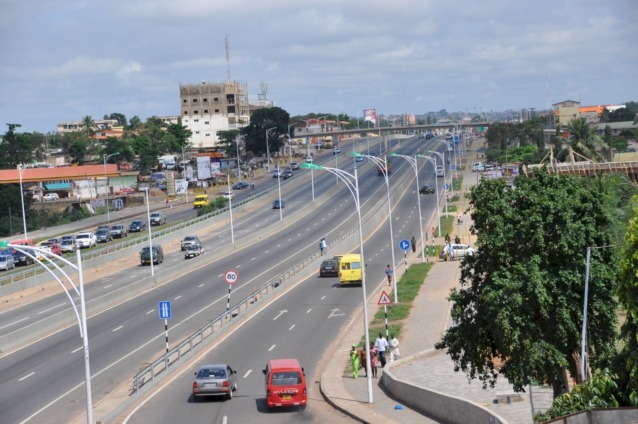ARTICLE AD
President Nana Addo Dankwa Akufo-Addo yesterday performed a symbolic inauguration of the newly refurbished Saint Barnabas Anglican Junior High School at Osu to begin the official opening of the over 80 educational infrastructure constructed by his government.
The exercise which was done simultaneously across the country also saw the Vice President, Dr Mahamudu Bawumia, also inaugurate the newly constructed Science Technology Engineering and Mathematics (STEM) school at Kpesimkpe in the North East Region.
 Education Projects—-President Akufo-Addo (second from left), unveiling the plaque to inaugurate the St. Barnabas School at Osu. With him is Nii Kwartei Titus Glover (right), Greater Accra Regional Minister
Education Projects—-President Akufo-Addo (second from left), unveiling the plaque to inaugurate the St. Barnabas School at Osu. With him is Nii Kwartei Titus Glover (right), Greater Accra Regional Minister
The projects formed part of the government’s efforts at improving access to quality education and included a range of modern facilities designed to cater for the diverse needs of students across the country.
Inaugurating the school, President Akufo-Addo said he was hopeful that every Ghanaian child would continue to have access to the resources and opportunities they deserved.

He noted the initiative covered a wide spectrum of educational needs, from basic schools to senior high schools and technical institutions.
Recounting the story of Saint Barnabas Anglican School, he said it was one that resonated deeply with his desires to see education become the centre of the country’s development.
 President Akufo-Addo (right) speaking to one of the pupil fo the school
President Akufo-Addo (right) speaking to one of the pupil fo the school
“For over six decades, the school stood in the heart of Accra as a beacon of education. Yet, it suffered from neglect. The school has not seen any major renovation since its establishment on November 1, 1961.
The classrooms were deteriorated with broken windows, leaking roofs and learning spaces unfit for children,” he said.
President Akufo-Addo said the transformed St Barnabas School was now equipped with modern facilities designed to meet the demands of 21st century education.
He noted that St Barnabas School was not just classrooms with new paints and ceilings but also spaces of possibility, where dreams would be nurtured and talents discovered.
He said Ghanaian children deserved the best and encouraged parents, teachers and community leaders to ensure that they have the support they need to succeed.
The Minister of Education, Dr Yaw Adutwum, said the government had over performed in the education sector, stressing “There are similar events taking place across the 16 regions of the country.”
He said the government’s dedication to modernising educational infrastructure and promoting academic excellence was unmatched.
Dr Adutwum described the improvements in infrastructure as a cornerstone of the NPP’s vision for national development, stressing that “We cannot educate 21st-century students in 19th-century buildings and expect 21st-century outcomes, it is not going to work and you can see pictures of children who are excited about what change means here today.”
Comparing Ghana’s current trajectory with South Korea’s, he said it was the same approach of educational transformation which had propelled South Korea’s remarkable economic transformation.
“The story of South Korea is fascinating. In 1960, our per capita income was higher than in South Korea but they did different things when they allowed secondary education to be extended to their people in the 1960s and 1970s. They did not stop there but they also embarked on STEM education in the 1970s.
We are 50 years behind, but at least we have begun, and definitely, the evidence available is going to tell the story of how the journey for STEM transformation began,” he emphasised.
BY CLIFF EKUFUL

 2 months ago
73
2 months ago
73 

